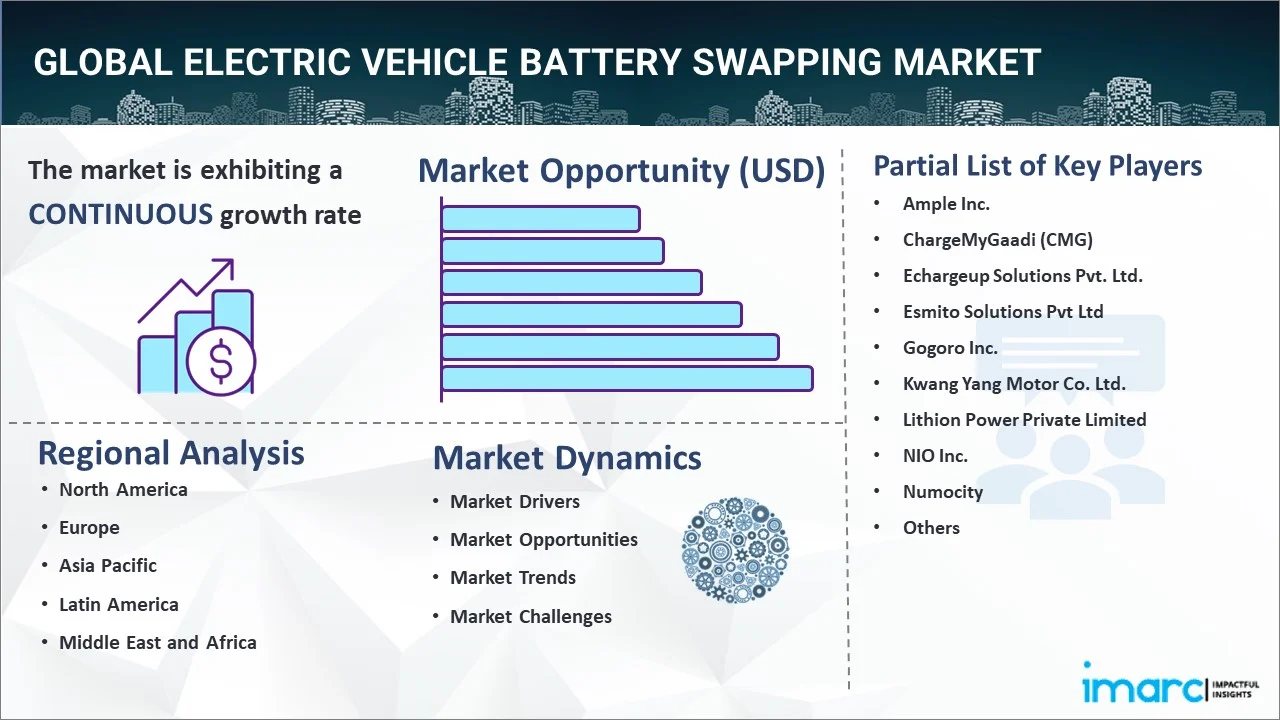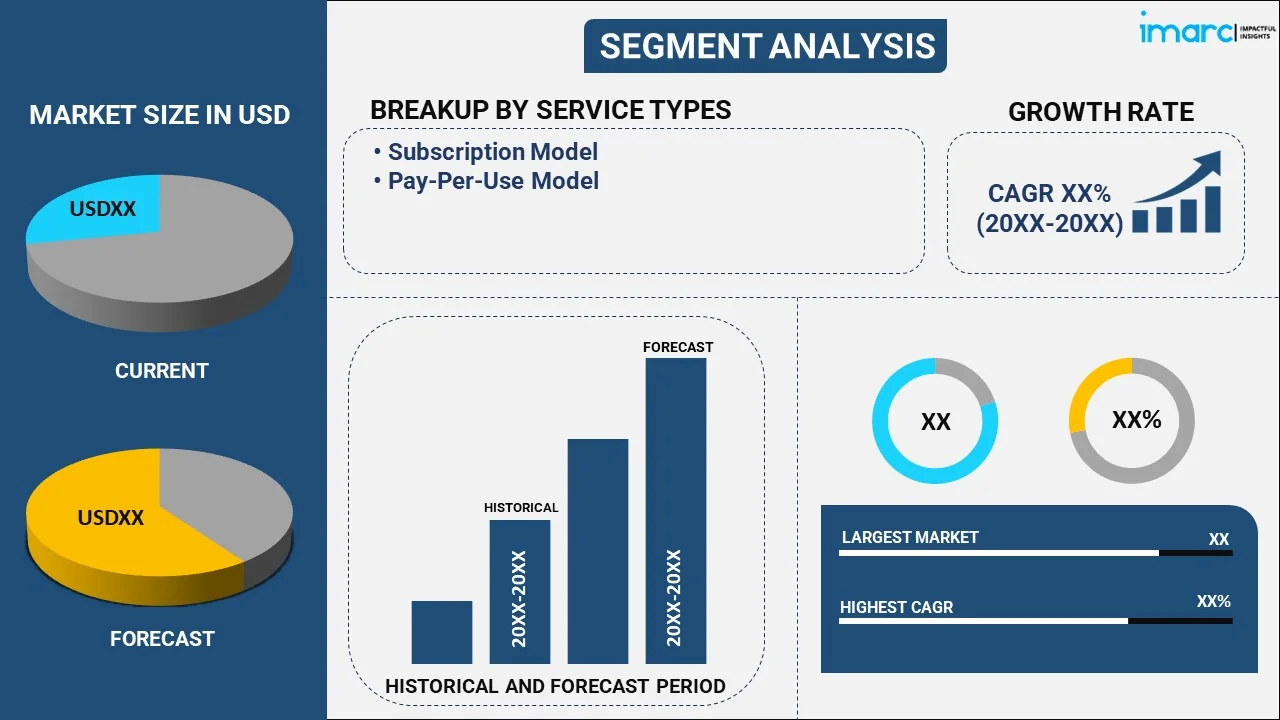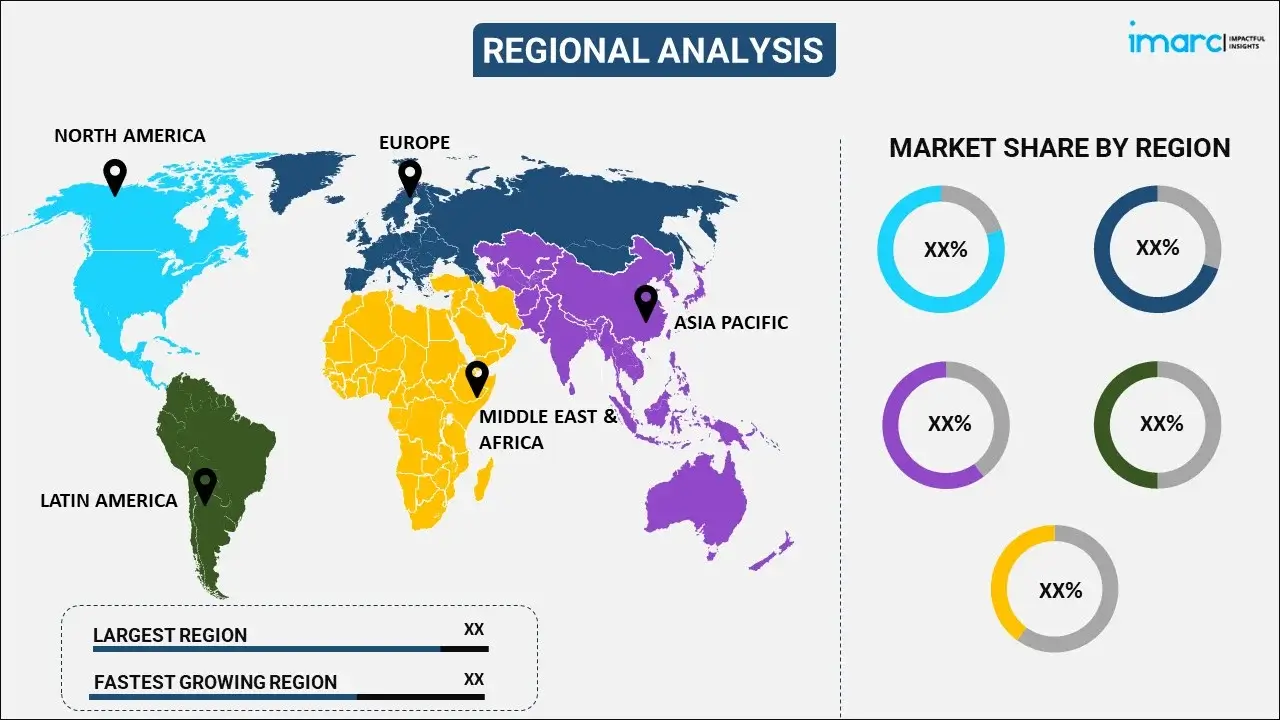
Electric Vehicle Battery Swapping Market Report by Service Type (Subscription Model, Pay-Per-Use Model), Vehicle Type (Two-Wheeler, Three-Wheeler, Passenger Vehicle, Commercial Vehicle, and Others), and Region 2025-2033
Market Overview:
The global electric vehicle battery swapping market size reached USD 234.9 Million in 2024. Looking forward, IMARC Group expects the market to reach USD 1,440.1 Million by 2033, exhibiting a growth rate (CAGR) of 21.2% during 2025-2033. The increasing sales of EVs, rising use of EVs in large commercial fleets, and the growing adoption of the battery as a service (BaaS) model are some of the major factors propelling the market.
|
Report Attribute
|
Key Statistics
|
|---|---|
|
Base Year
|
2024
|
|
Forecast Years
|
2025-2033 |
|
Historical Years
|
2019-2024
|
| Market Size in 2024 | USD 234.9 Million |
| Market Forecast in 2033 | USD 1,440.1 Million |
| Market Growth Rate 2025-2033 | 21.2% |
Electric vehicle (EV) battery swapping is an innovative technology and service that aims to address the limitations of EV charging time and range anxiety. It involves driving the EV into a swap station, wherein automated systems replace the empty battery with a pre-charged one within minutes. It offers a swift and convenient alternative to traditional charging methods by allowing EV owners to exchange their depleted batteries with fully charged ones at specialized battery swap stations. It enables EV drivers to quickly resume their journeys without lengthy charging delays.

The increasing sales of EVs among the masses on account of rapid urbanization and inflating income levels are strengthening the market growth. Moreover, the rising adoption of EVs in large commercial fleets, such as taxis and delivery services, is favoring the growth of the market. In addition, the growing use of EV battery swapping as a backup power source during natural disasters and emergencies, which provides a reliable energy supply in critical situations, is influencing the market positively. Apart from this, the integration of the internet of things (IoT), to improve battery management systems (BMS), swapping services, remote monitoring, and customer experience is contributing to the market growth. Furthermore, the rising adoption of the battery as a service (BaaS) model that helps eliminate the risk associated with owning batteries and significantly reduces the total vehicle cost for owners is propelling the growth of the market.
Electric Vehicle Battery Swapping Market Trends/Drivers:
Associated benefits
One of the primary factors driving the demand for EV battery swapping is the convenience and time efficiency it offers. Traditional charging methods often require lengthy charging times, which leads to range anxiety and inconvenience for EV owners. Battery swapping addresses this challenge by providing a rapid battery replacement process, typically taking a few minutes. EV drivers can exchange their depleted batteries with fully charged ones at swapping stations, which eliminates the need to wait for extended charging periods. This convenience is particularly appealing for urban dwellers and long-distance travelers, as it enables uninterrupted journeys without compromising on time. Additionally, for commercial EV fleets, battery swapping ensures maximum vehicle uptime, which allows businesses to maintain continuous operations efficiently. As a result, the demand for EV battery swapping continues to grow as consumers and businesses seek hassle-free and time-efficient charging solutions for their EVs.
Rise in demand for sustainable and environment friendly transportation
The demand for EV battery swapping is driven by the increasing focus on sustainable and eco-friendly transportation solutions. EVs are regarded as an environmentally friendly alternative to internal combustion engine vehicles, as they produce zero tailpipe emissions. Battery swapping complements this eco-conscious mindset by reducing the overall carbon footprint of electric mobility. Battery swapping systems contribute to a more sustainable transportation ecosystem by streamlining the charging process and utilizing renewable energy sources at swapping stations. As governments and individuals prioritize environmental conservation and seek to reduce greenhouse gas emissions, the appeal of battery swapping as a green and clean charging option continues to grow. Embracing battery swapping aligns with the broader vision of achieving cleaner air and a greener planet, fostering strong demand for EV battery swapping as a key component of sustainable transportation solutions.
Increase in flexibility for EV charging infrastructure deployment
EV battery swapping offers a flexible and adaptable solution for the deployment of EV charging infrastructure. Unlike traditional charging stations that require significant physical infrastructure and may face challenges with zoning and land use, battery swapping stations can be strategically located in areas with high EV traffic or specific user demands. This flexibility allows for rapid expansion and scalability of the battery swapping network, which makes it easier for charging infrastructure providers to meet the evolving needs of the electric mobility market. Additionally, battery swapping stations can be installed in a variety of locations, such as parking lots, gas stations, or retail centers, providing multiple access points for EV owners. This decentralized approach to charging infrastructure deployment ensures broader coverage, which enables a more convenient and accessible charging experience for EV users. As a result, the demand for EV battery swapping is bolstered by its ability to adapt to diverse geographical and urban settings, which makes it a versatile and practical charging solution.
Electric Vehicle Battery Swapping Industry Segmentation:
IMARC Group provides an analysis of the key trends in each segment of the global electric vehicle battery swapping market report, along with forecasts at the global, regional and country levels from 2025-2033. Our report has categorized the market based on service type and vehicle type.
Breakup by Service Type:

- Subscription Model
- Pay-Per-Use Model
Subscription model dominates the market
The report has provided a detailed breakup and analysis of the market based on the service type. This includes subscription model and pay-per-use model. According to the report, subscription model represented the largest segment. EV owners sign up for a subscription plan offered by the battery swapping service provider. They pay a fixed fee at regular intervals, such as monthly or annually, to access the battery swapping service. The subscription fee typically covers a certain number of battery swaps or a specific usage quota within the given period. Subscribers can swap their EV batteries at designated swapping stations without any additional charge, as long as they stay within the subscription terms.
On the other hand, in the pay-per-use model, EV owners use the battery swapping service on a pay-as-you-go basis. They are charged for each battery swap they make instead of subscribing to a fixed plan. The service provider typically sets a price per battery swap, and users pay for the actual number of swaps they utilize. This model offers flexibility for those who may not need frequent battery swapping and prefer to pay only when they use the service.
Breakup by Vehicle Type:
- Two-Wheeler
- Three-Wheeler
- Passenger Vehicle
- Commercial Vehicle
- Others
Two-wheeler holds the largest share in the market
A detailed breakup and analysis of the market based on the vehicle type has also been provided in the report. This includes two-wheeler, three-wheeler, passenger vehicle, commercial vehicle, and others. According to the report, two-wheeler accounted for the largest market share. Electric scooters and motorcycles can benefit from battery swapping. Owners of electric two-wheelers can visit battery swapping stations to exchange their depleted batteries with fully charged ones, which allows them to extend the range of the vehicle and reduce charging time.
Battery swapping can be implemented for electric three-wheelers, such as electric auto-rickshaws or tuk-tuks, to enable drivers to quickly replace their discharged batteries, which keeps their vehicles operational for extended periods and provides better service to passengers.
EVs are designed for individual and family transportation and can also utilize battery swapping. Although less common in passenger vehicles due to the larger battery sizes, certain electric car models might incorporate swappable battery technology, which allows for faster charging and extended travel range.
Breakup by Region:

- North America
- United States
- Canada
- Asia-Pacific
- China
- Japan
- India
- South Korea
- Australia
- Indonesia
- Others
- Europe
- Germany
- France
- United Kingdom
- Italy
- Spain
- Russia
- Others
- Latin America
- Brazil
- Mexico
- Others
- Middle East and Africa
Asia Pacific exhibits a clear dominance, accounting for the largest electric vehicle battery swapping market share
The report has also provided a comprehensive analysis of all the major regional markets, which include North America (the United States and Canada); Asia Pacific (China, Japan, India, South Korea, Australia, Indonesia, and others); Europe (Germany, France, the United Kingdom, Italy, Spain, Russia, and others); Latin America (Brazil, Mexico, and others); and the Middle East and Africa. According to the report, Asia Pacific accounted for the largest market share.
The increasing adoption of EV battery swapping to provide a viable alternative to charging, which offer faster and more accessible energy replenishment due to the limited availability of public charging infrastructure for EVs in several countries of the Asia Pacific region is supporting the market growth. Moreover, measures undertaken by governing agencies of numerous countries in the region to promote the usage of EVs and reduce carbon emissions are bolstering the market growth. Besides this, the growing inclination towards two-wheeled EVs, such as e-scooters and e-bikes, is influencing the market positively in the region.
North America is estimated to witness stable growth, owing to the increased preference for EVs, integration of advanced technologies, extensive research and development (R&D) projects, etc.
Competitive Landscape:
The leading companies are automating battery swapping stations that are equipped with automated systems that facilitate seamless and efficient battery replacement. They also involve advanced robotics and mechanical components to ensure safe and precise battery handling during the swapping process. Moreover, key players are integrating sophisticated battery health monitoring technologies to assess the condition and performance of the batteries, which ensures that only well-functioning and safe batteries are offered to customers. They are also incorporating fast charging capabilities, which enable rapid charging of the batteries before they are swapped into the EVs and minimize the downtime for vehicles. Besides this, leading players offering battery swapping services are including comprehensive battery traceability and management systems to track the lifecycle of each battery, from manufacturing to disposal, which ensure proper maintenance, recycling, and end-of-life management.
The report has provided a comprehensive analysis of the competitive landscape in the market. Detailed profiles of all major companies have also been provided. Some of the key players in the market include:
- Ample Inc.
- ChargeMyGaadi (CMG)
- Echargeup Solutions Pvt. Ltd.
- Esmito Solutions Pvt Ltd
- Gogoro Inc.
- Kwang Yang Motor Co. Ltd.
- Lithion Power Private Limited
- NIO Inc.
- Numocity
- Oyika Pte. Ltd.
- SUN Mobility
Electric Vehicle Battery Swapping Market News:
- May 2024: Nio entered into a strategic alliance with GAC Group to develop standardized battery technology and construct swapping stations to accommodate interchangeable batteries. This partnership aimed to incorporate advanced Battery Management Systems (BMS) to ensure seamless compatibility across the EV models.
- March 2024: Ola Electric announced that its patented swappable battery technology specifically designed for its new B2B electric scooters and rickshaws. The batteries facilitate convenient installation & removal. The new batteries are planned to be placed beneath the rider's seat in the B2B models.
Electric Vehicle Battery Swapping Market Report Scope:
| Report Features | Details |
|---|---|
| Base Year of the Analysis | 2024 |
| Historical Period | 2019-2024 |
| Forecast Period | 2025-2033 |
| Units | Million USD |
| Scope of the Report | Exploration of Historical and Forecast Trends, Industry Catalysts and Challenges, Segment-Wise Historical and Predictive Market Assessment:
|
| Service Types Covered | Subscription Model, Pay-Per-Use Model |
| Vehicle Types Covered | Two-Wheeler, Three-Wheeler, Passenger Vehicle, Commercial Vehicle, Others |
| Regions Covered | Asia Pacific, Europe, North America, Latin America, Middle East and Africa |
| Countries Covered | United States, Canada, Germany, France, United Kingdom, Italy, Spain, Russia, China, Japan, India, South Korea, Australia, Indonesia, Brazil, Mexico |
| Companies Covered | Ample Inc., ChargeMyGaadi (CMG), Echargeup Solutions Pvt. Ltd., Esmito Solutions Pvt Ltd, Gogoro Inc., Kwang Yang Motor Co. Ltd., Lithion Power Private Limited, NIO Inc., Numocity, Oyika Pte. Ltd., SUN Mobility. etc. |
| Customization Scope | 10% Free Customization |
| Post-Sale Analyst Support | 10-12 Weeks |
| Delivery Format | PDF and Excel through Email (We can also provide the editable version of the report in PPT/Word format on special request) |
Key Benefits for Stakeholders:
- IMARC’s report offers a comprehensive quantitative analysis of various market segments, historical and current market trends, market forecasts, and dynamics of the electric vehicle battery swapping market from 2019-2033.
- The research study provides the latest information on the market drivers, challenges, and opportunities in the global electric vehicle battery swapping market.
- The study maps the leading, as well as the fastest-growing, regional markets. It further enables stakeholders to identify the key country-level markets within each region.
- Porter's five forces analysis assist stakeholders in assessing the impact of new entrants, competitive rivalry, supplier power, buyer power, and the threat of substitution. It helps stakeholders to analyze the level of competition within the electric vehicle battery swapping industry and its attractiveness.
- Competitive landscape allows stakeholders to understand their competitive environment and provides an insight into the current positions of key players in the market.
Key Questions Answered in This Report
We expect the global electric vehicle battery swapping market to exhibit a CAGR of 21.2% during 2025-2033.
The rising demand for electric vehicle battery swapping to aid in improving battery efficiency for smaller vehicles, eliminating the concerns of long charging time, minimizing the financial burden, etc., is primarily driving the global electric vehicle battery swapping market.
The sudden outbreak of the COVID-19 pandemic had led to the implementation of stringent lockdown regulations across several nations resulting in the temporary closure of numerous swapping stations as well as shortage of skillful personnel for electric vehicle battery swapping services.
Based on the service type, the global electric vehicle battery swapping market has been segmented into subscription model and pay-per-use model. Currently, subscription model holds the majority of the total market share.
Based on the vehicle type, the global electric vehicle battery swapping market can be divided into two-wheeler, three-wheeler, passenger vehicle, commercial vehicle, and others. Among these, two-wheeler exhibits a clear dominance in the market.
On a regional level, the market has been classified into North America, Asia-Pacific, Europe, Latin America, and Middle East and Africa, where Asia-Pacific currently dominates the global market.
Some of the major players in the global electric vehicle battery swapping market include Ample Inc., ChargeMyGaadi (CMG), Echargeup Solutions Pvt. Ltd., Esmito Solutions Pvt Ltd, Gogoro Inc., Kwang Yang Motor Co. Ltd., Lithion Power Private Limited, NIO Inc., Numocity, Oyika Pte. Ltd., and SUN Mobility.
Need more help?
- Speak to our experienced analysts for insights on the current market scenarios.
- Include additional segments and countries to customize the report as per your requirement.
- Gain an unparalleled competitive advantage in your domain by understanding how to utilize the report and positively impacting your operations and revenue.
- For further assistance, please connect with our analysts.
 Inquire Before Buying
Inquire Before Buying
 Speak to an Analyst
Speak to an Analyst
 Request Brochure
Request Brochure
 Request Customization
Request Customization




.webp)




.webp)












